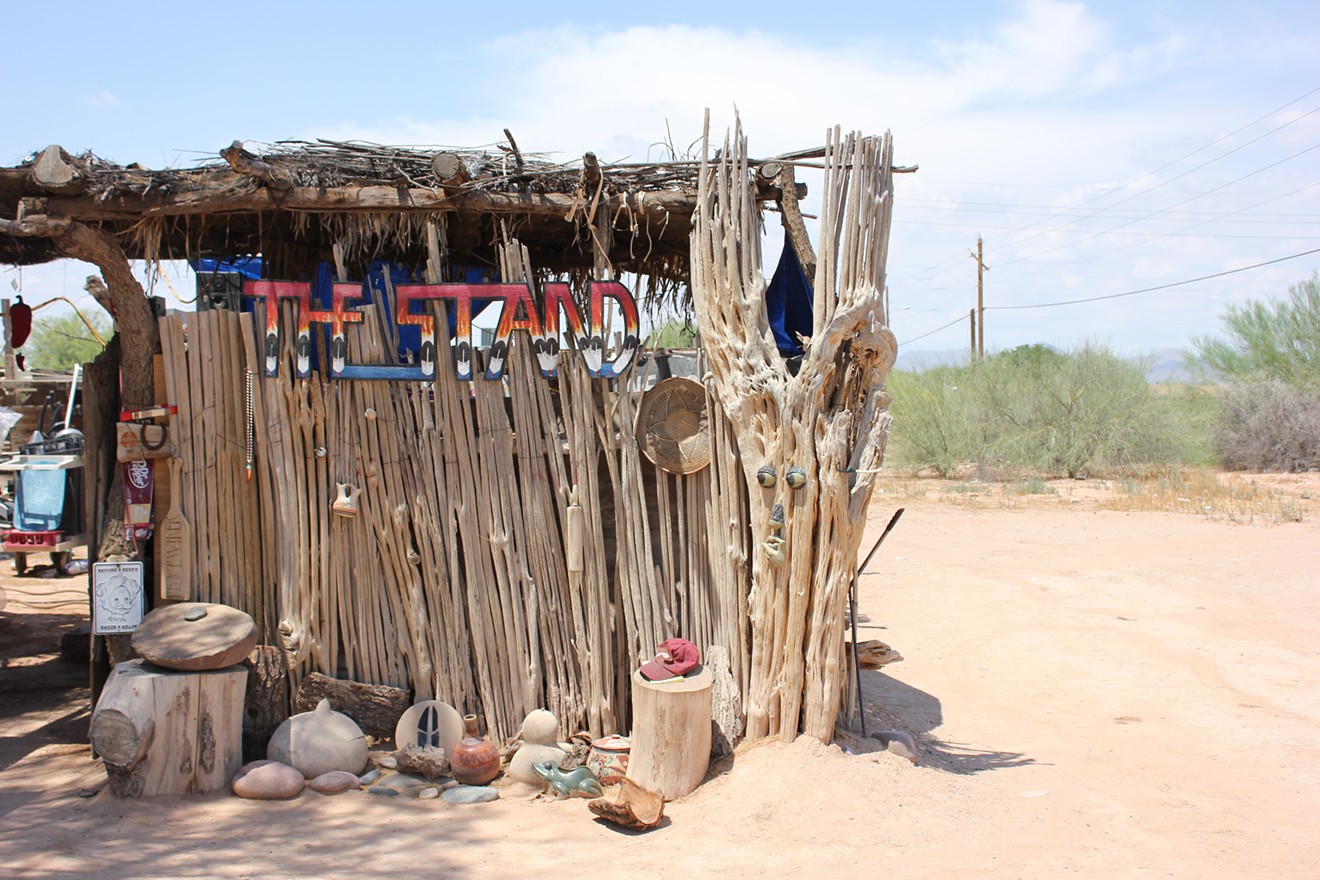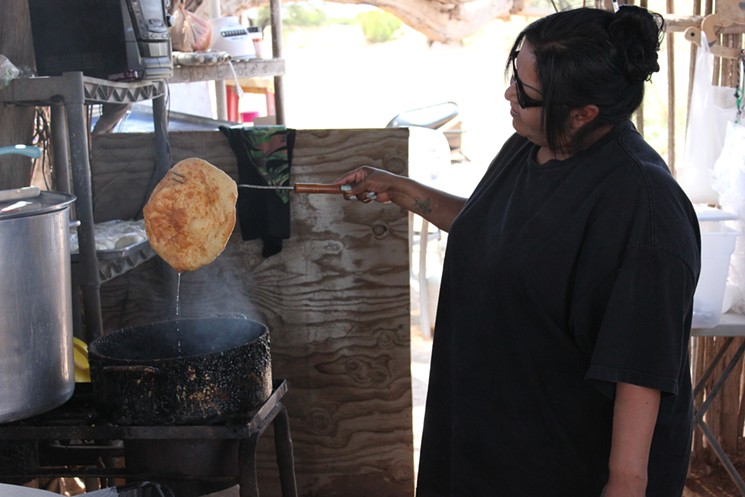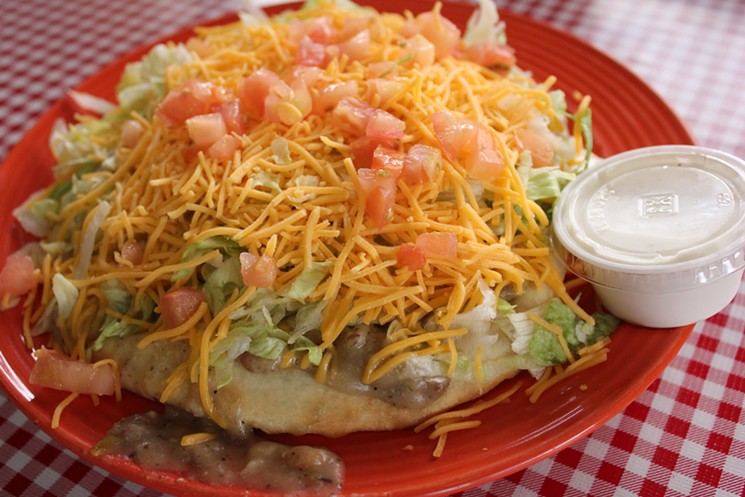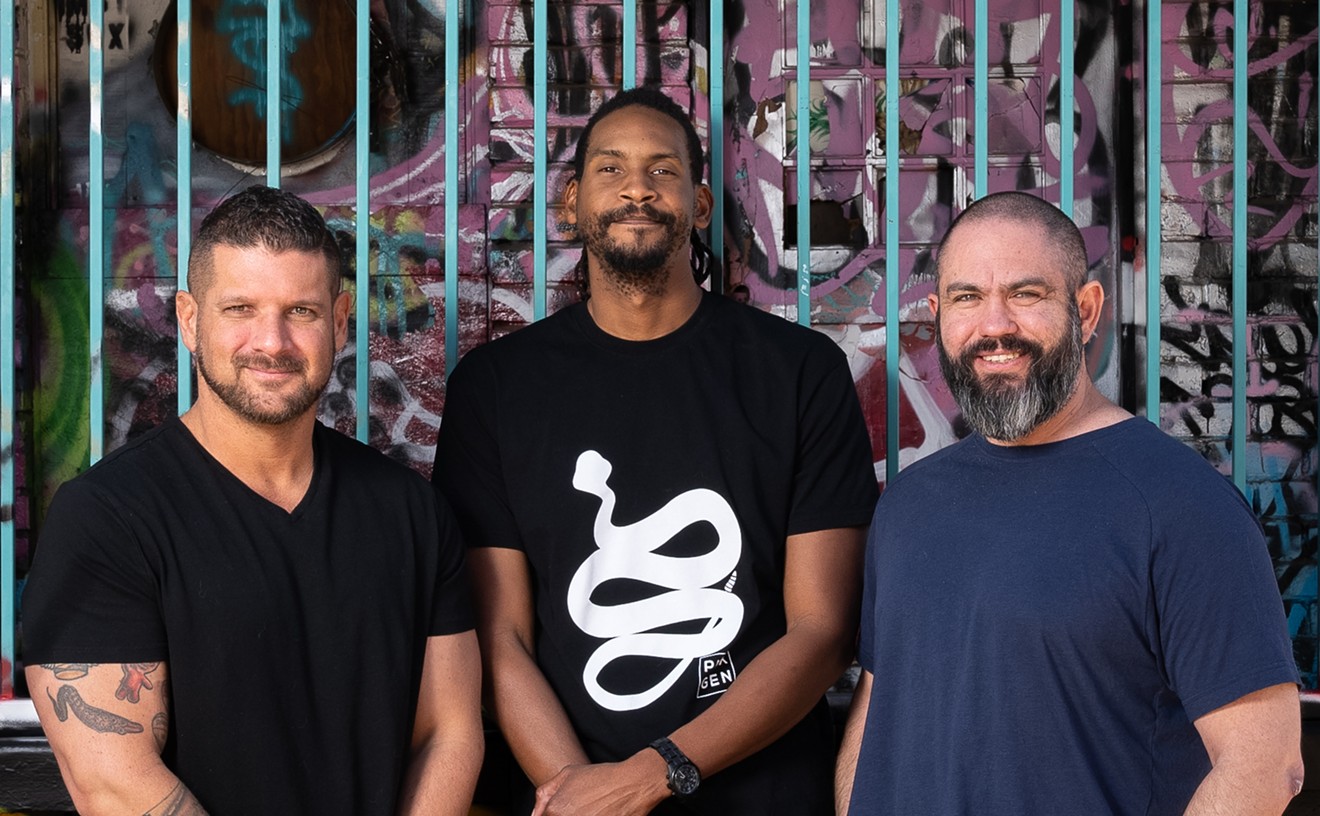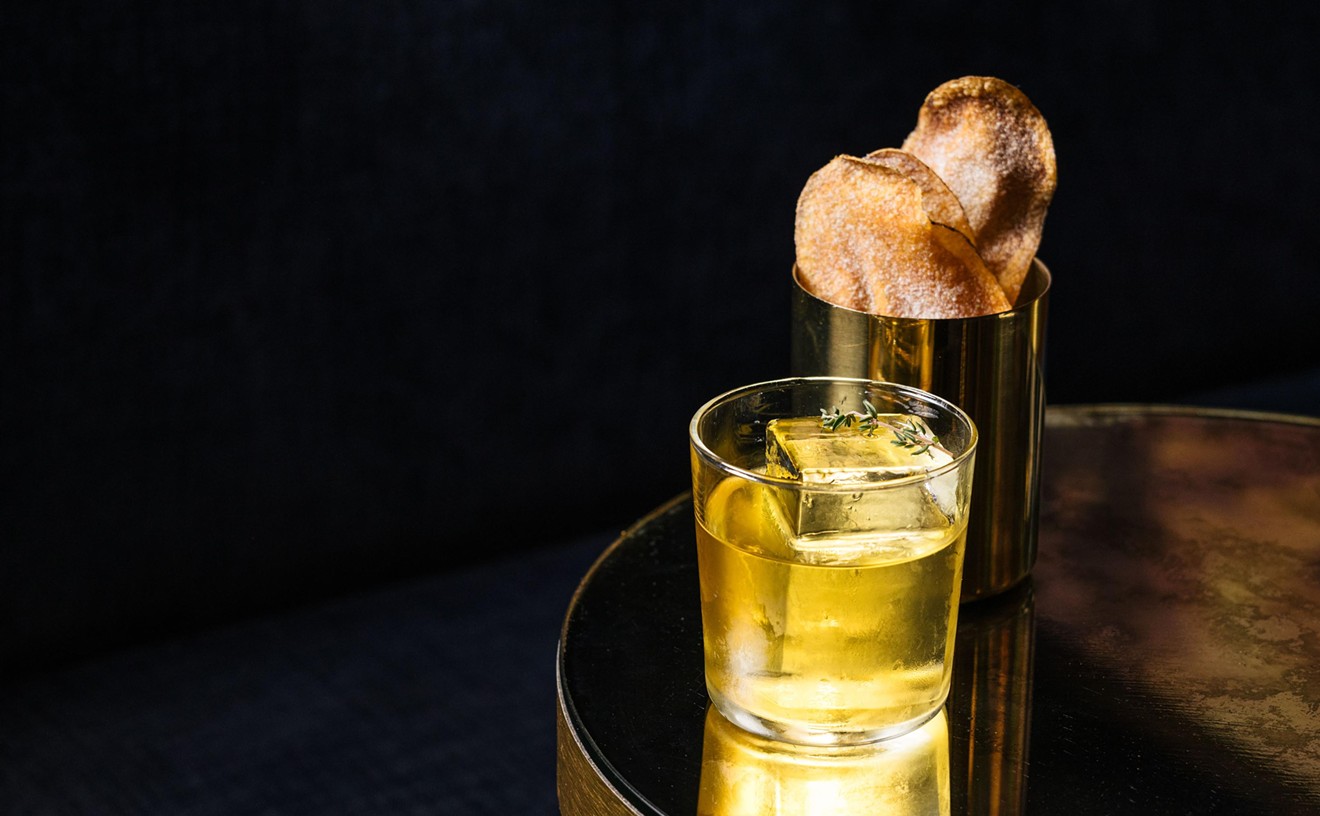Stop one is in an often-overlooked part of the Valley, the 12,000-acre Salt River Pima-Maricopa Indian Community.
I park on the dusty shoulder off East Indian School Road and walk toward The Stand, a shack made of cactus ribs, where men and women have cooked fry bread for 12 years.
Metro Phoenix is flanked to the south and east by Native American communities. Arizona has 22 sovereign Native American nations in all, and more tribes that aren't federally recognized. If you look at a map of metro Phoenix, the Salt River community is to the east, at 3 o'clock.
At 4:30, the Gila River Indian Community appears. At 5 o'clock, the Maricopa Ak-Chin Indian Community's cotton, corn, and barley fields spread. At 6, one of the Tohono O'odham Nation's four parcels shows. Below it, some two hours south by car, the largest Tohono O'odham parcel stands, abutting Mexico. At 2.8 million acres, the Tohono O'odham Nation is America's second largest. The largest, Navajo Nation, covers 17 million acres, spilling from Arizona into two other states and spanning an area three times the size of New Jersey.
Native American lands make up more than a quarter of Arizona. Arizona's Native Americans number more than a quarter-million. Even now, in 2018, some subsist in part on fry bread.
You can find fry bread in homes on these lands, and in shacks, stands, dives, and restaurants throughout metro Phoenix. Today, we'll be touring three spots known for fry bread: The Stand, Maria’s Frybread & Mexican Food, and The Fry Bread House.
Compared to how long people have been eating in the Americas, fry bread is a young food.
Fry bread goes back 150 years. It began when the American government, hungry for expansion, gave natives flour, salt, lard, baking powder, and other meager rations for confinement and forced marches.
“We didn’t know what to do with that stuff,” says Sandra Miller, owner of The Fry Bread House in Phoenix, a Tohono O'odham. "We were used to going into the desert for cactus fruit, seeds, and berries, and farming our land with crops passed down and saved for thousands of years.”
What her ancestors did was mix ingredients, make dough, and fry bread.
Today, Native Americans in many parts of the U.S. still cook fry bread. That natives took these alien ingredients and made them into the food most identified with their culture today speaks to resiliency. Fry bread, though not Native American, has become Native American.
Sun scorches The Stand's cactus-rib shack. The top has been thatched from palm fronds and arrowroot gathered from near the Salt River, the same Salt River that, back in the 1860s, led Jack Swilling to found the farming community that would become Phoenix.
“A long time ago, fry bread was never deep fried. It was just cooked on the rocks," says Cindy Washington, a Tohono O’odham, who co-owns The Stand with her Pima-Maricopa husband, Michael.
Cindy explains that it wasn’t until local natives discovered metals that they started deep frying bread. Frying in metals makes for puffier bread, she says. At The Stand, Cindy uses her mom’s fry bread recipe. Mix flour, salt, baking powder, and vegetable shortening ("never lard"). Knead until everything comes together. Let dough rest for ten to fifteen minutes. Shape pieces into discs. Dunk them in molten canola oil for 15 or 20 seconds on each side, depending on the oil's heat and the dough's coolness.
She forks a fry bread disc from its oil bath. Grease streams back into the fryer. The dough is puffed and ridged, pocked with moon-like crags and dark brown patches.
Cindy recommends topping her fry bread with red beef chile. When you add a topping like red chile to fry bread, it becomes an "Indian taco," and your snack becomes a meal. At $6, her fry bread slathered with spicy chile is a deal.
Cindy estimates 75 percent of her clients are Native American. Others come from as near as Scottsdale and as far as Japan. Michael says that The Stand is a spot where natives meet friends and family, often by accident.
The Stand's fry bread is hot and light, almost like a disc of savory funnel cake. With red chile sauce, it has a heft and blunt spice that feel good, in a kind of strangely beautiful way, when combined with the broiling heat of the desert summer.
I head back to my car. I crank sunny tunes and A/C.
The Salt River Reservation recedes in the rearview, a patch of green, blue, and dirt-red. You can almost picture the land as it once was: green corn and cotton, fields of beans, squash, and sugarcane, the stone jewelry and clay pottery, hunters going after quick jackrabbits and javelinas.
The rural picture disappears in a rush of concrete, glass, and strip malls: Arcadia. In one of them, nestled in the crook of an intersection, Maria’s Frybread & Mexican Food hums in a tiny corner shop.
Manager Carlos Miranda might take your order.
The walls are red and yellow brick, stucco and cinderblock. A man eating lunch with his family slowly rises, walks to Carlos. He just devastated an "Indian taco" as big as my head. “Could I get two fry breads to-go with everything on the side?” he asks. “We have a four hour drive.”
Carlos’ mom, Maria, opened the eatery in January 2016. She spent 25 years in the kitchen of Angelina’s, run by the late Angela Peralta, a local New Mexican cook with Native American roots. Maria learned Peralta's recipes, including fry bread. Though Maria’s family is from Michoacán, Mexico, and though photos of posole and burritos hang in her restaurant, fry bread is by far her best seller.
Carlos says he and his mom sell 300 to 350 orders of it a day.
Customers can ask for fry bread soft or crispy. Maria and Carlos both prefer crispy. To achieve this, Maria fries her dough longer. Her approach diverges from The Stand’s in that she uses a longer rest period of two hours—and lard. A rich fry bread results.
You can upgrade that fry bread to an "Indian taco" in many ways—shredded chicken or beef, carne asada, red and green chile. There's also a breakfast fry bread with chorizo, eggs, and potatoes. And there's a dessert fry bread with honey, powdered sugar, and cinnamon. Maria proves that you don’t need to be a Native American to sizzle stellar fry bread, though it helps to have been mentored by one.
After this convivial and gut-stretching stop, we leave Carlos. No road eats for this party.
It's on to the next stop, on West Indian School Road.
Cecelia Miller opened The Fry Bread House more than 25 years ago. The location hopped around over the years, with one upgrade financed by a grant from the Tohono O’odham Nation. In 2012, Fry Bread House won a James Beard Award. Today, Sandra Miller, Cecelia's daughter, runs operations.
“Fry bread,” she explains, “is just biscuit dough deep fried.”
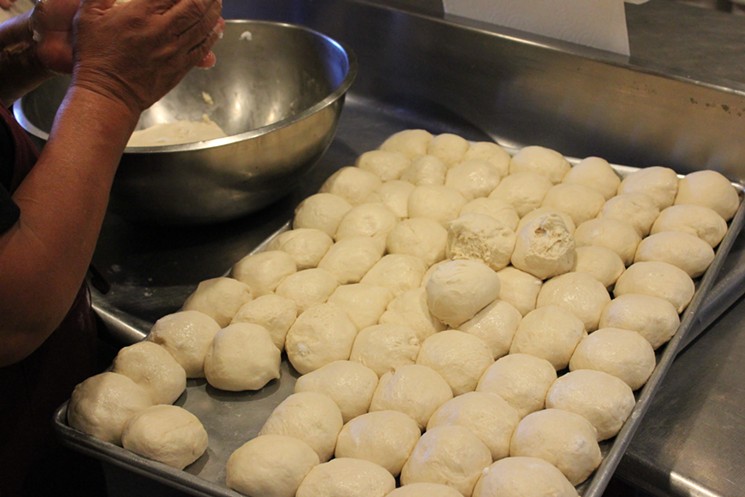
A tray of fry bread dough being shaped at The Fry Bread House (tray capacity: 77 dough balls).
Chris Malloy
Sandra says that everyone makes fry bread differently. She compares fry bread in the Southwest to the way pizza varies from place to place in a city like New York. She notes that Navajos often poke a hole in dough before dropping it into the fryer.
Sandra deploys many fry bread toppings. She uses a red chile—a recipe from her mom's side—that stews for so long you can't tell its deeply red meat was once brown.
This recipe goes back generations, and far into the Valley's past.
“Lots of [native] folks say fry bread’s not our culture, that it’s a white man’s food," says Sandra. “Lots of people, traditionalists, will say 'I never eat fry bread because I eat legumes and seeds and cactus fruit and corn, and we’re not going to have a white man’s food.'” Sandra herself takes another view: “Fry bread is steeped in tradition. Because we’ve been doing it for so long, it has almost become cultural.”
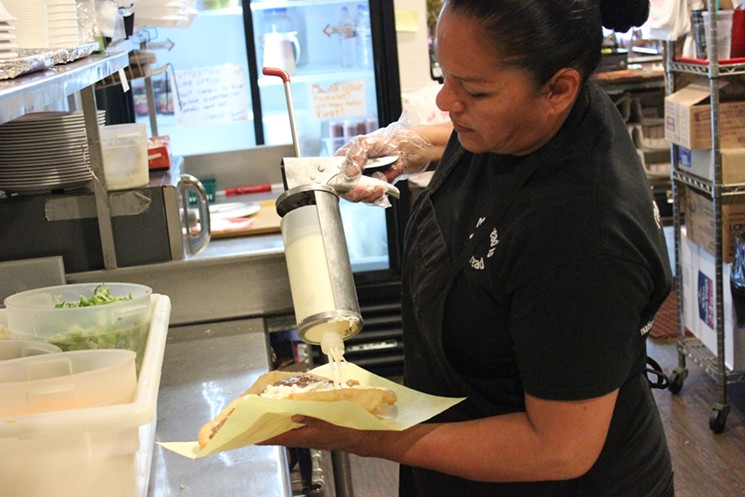
Gunning sour cream onto an "Indian taco" for the early dinner crowd at The Fry Bread House.
Chris Malloy
Sandra’s green chile started with her mom’s first husband. He had a taste for the green chiles of his homeland, so Sandra's mom adapted her red chile to his preferences. He was a Laguna Pueblo from a village west of Albuquerque, New Mexico. (Sandra’s dad was her mom's second husband, her community's German-Scots minister.) When Hatch season comes to New Mexico in late-summer, Sandra buys the peppers in 100-pound gunnysacks. Roasted for depth of flavor, pepper pods can be used to stew green chile until the last of the stash runs out, usually in December.
And man, does green chile make for a beautiful add-on to fry bread.

The Fry Bread House's dessert fry bread, topped with chocolate sauce and melted butter.
Chris Malloy
Three stops down. I am foolishly full, carb-high, and grease-drunk. A fourth stop, you ask?
I throw in the towel. Next time!
The Stand. 3996 North Alma School Road, Salt River Pima-Maricopa Indian Community; 480-519-1108.
Monday to Friday 11 a.m. to 6 p.m.; closed Saturday and Sunday.
Maria's Frybread & Mexican Food. 4041 East Thomas Road, #124, 602-957-3514.
Monday to Saturday 9 a.m. to 8 p.m.; Sunday 9 a.m. to 5 p.m.
The Fry Bread House. 4545 North Seventh Avenue, 602-351-2345.
Monday to Thursday 10 a.m. to 8 p.m.; Friday and Saturday 10 a.m. to 9 p.m.; closed Sunday.

